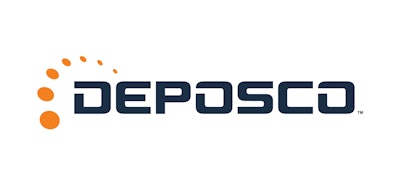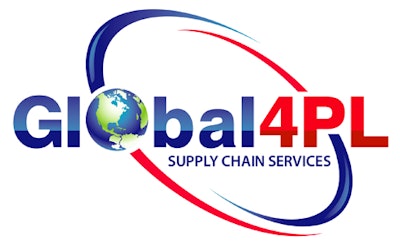
From demand planning and forecasting to implementing the ultimate in warehouse automation, the past 12 months has seen companies within the supply chain and logistics space upgrade, enhance, adopt and adapt in order to achieve greater efficiency along the chain.
But the key to achieving greater efficiency is building in the visibility needed to help logistics companies prepare for what’s ahead and plan accordingly. And that’s exactly what the winners of this year’s Top Supply Chain Projects did and continue to do.
In fact, 58% of this year’s winners completed or are working on supply chain projects pertaining to supply chain visibility, followed by 54% in supply chain resiliency. Other top projects types entail automation (41%), procurement (30%), demand planning/forecasting (25%) and project management (24%).
This year’s winners also achieved collaboration. Companies partnered to implement each others' software and technology and work smarter, together. And, it's these partnerships that have enabled many supply chain organizations to better manage inventory, reduce costs, retain employees, track data and analytics and build resilience for whatever disruptions may lie ahead.
Congratulations to this year’s winners. CLICK HERE to view the full list of winners. Here’s some standouts:

ALOM
alom.com
Customer Client Company: ALOM
Project Type: ESG, Supply Chain Sustainability
Business Objective: The business objective of R2NZ (Road To Net Zero) was to establish source credibility and data reporting legitimacy to validate ALOM’s greenhouse gas emission (GHG) reduction progress and claims. A science-based and results-oriented approach helps ALOM identify GHG reduction milestones and achieve objectives centered upon near-sourcing, freight reduction, renewable energy adoption and third-party ratings/validations. As a result, ALOM secured ISO-14064-1 certification, ensuring transparency in measuring and reporting category 1-4 greenhouse gas emissions (CO2). ALOM also established 2022 GHG baseline of 1065 metric tons of category 1-4 GHG emissions, and in 2023, is beginning its first full year of data measurement and GHG reduction reporting based upon comparison to its 2022 baseline. ALOM’s application was reviewed and accepted by U.S. EPA Green Power Partnership for excellence in CO2 emission reduction through use of renewable energy, and applied for EcoVadis sustainability rating for demonstrated effectiveness meeting international supply chain management standards for corporate social responsibility and sustainable procurement practices. Other achievements include securing 100% renewable electric power generation for its Fremont, Calif., and Indianapolis-based facilities; adoption of SBTi corporate net-zero standard framework for target setting in line with climate science consistent with limiting global temperature rise to 1.5°C; launching supplier near-sourcing initiative to establish physical footprint of all ALOM suppliers within 100 miles of a production or fulfillment facility and reduce freight distances by 25% per year; and publishing 2022 ESG report documenting initiatives and results achieved across a wide range of ESG-centric programs.
ROI: R2NZ demonstrated leadership, contributing to contract renewals/new business over the past 12-18 months. ALOM also launched a fully re-engineered returns management system in Q1’23 to eliminate landfill disposal. When a product malfunctions or reaches end of life, it is returned to ALOM for replacement, reconfiguration or processed for recycling. ALOM also installed a high-efficiency electric compactor at its Indianapolis facility to replace a diesel-powered model, thus eliminating burning 157 gallons of diesel per month and saving $10,000 a year in fuel cost. In 2022, ALOM recycled 580 tons of corrugate, saving 9,860 trees from being felled and eliminating 580 tons of CO2 emissions that would have been generated manufacturing the same amount of cardboard from virgin trees. The reach of R2NZ is all encompassing; extending both upstream and downstream to seamlessly integrate with supplier and customer systems to track the impacts of their actions and build in processes for zero waste product lifecycles.

Deposco
deposco.com
Customer Client Company: Psycho Bunny
Project Type: Design-Build, E-Commerce, In-Store Fulfillment and Visibility, Retail, Supply Chain Resiliency, Supply Chain Visibility, Wearables/Handhelds/Scanners, WMS/TMS
Business Objective: Psycho Bunny has been taking proactive steps to enhance its inventory management system across 60-plus stores. Previously, the brand faced challenges due to a fragmented system that did not provide real-time inventory visibility, resulting in stock-outs and lost sales. To address this, it has been streamlining processes and leveraging physical stores as proxy warehouses to fulfill more e-commerce orders. Deposco’s Bright Store software enabled Psycho Bunny to have real-time visibility into inventory across all 60 stores, with room to grow seamlessly. The ship-from-store functionality created a scalable process for fulfilling orders directly from store locations. This allowed the brand to reduce order fulfillment time significantly, resulting in increased customer satisfaction. The implementation of Deposco Bright Store software took only 6 months. Leveraging Deposco’s extensive library of more than 150 pre-built software integrations, the platform’s webhook-based integrations enabled Psycho Bunny to have real-time visibility into all store inventory.
ROI: With the first store live in only 3 months, Psycho Bunny was shipping more than 62,000 orders through Deposco, with a major reduction in delivery times. A large percentage of inventory is now available to online sales channels via a scalable system that is on track to support more than 100 physical stores by the end of the year. Psycho Bunny more than doubled its store count during the project. Deposco established an efficient onboarding process, and as the business continues to scale, they can roll out Deposco’s solution with very minimal effort, time or end-user training.

Global4PL
global-4pl.com
Customer Client Company: Bio-based sustainable products manufacturer
Project Type: Last Mile, Packaging, Procurement, Project Management, Supply Chain Visibility, Third-Party Warehouse Services, Trucking Service, WMS/TMS Business Objective: Worldwide distribution and supply chain support in 74 countries.
ROI: Complete supply chain from manufacturing to customers worldwide as well as DCs in several continents.

Kaleris
kaleris.com
Customer Client Company: Georgia Ports Authority (GPA)
Project Type: Marine container terminal (ocean port)
Business Objective: As the nation’s third-busiest gateway for containerized trade, millions of people, businesses and organizations rely on the essential services of the GPA. The GPA operates deepwater ports in Savannah and Brunswick as well as inland terminals in Chatsworth, Bainbridge, and Columbus. Georgia’s deepwater ports and inland facilities support more than 560,000 jobs throughout the state annually. With rapidly growing operations, GPA continually experienced record volumes. This led the Authority to expedite infrastructure projects, adding 1.7 million TEUs of annual container yard capacity. To support current growth, drive more efficient operations and carry the GPA into the future, the Authority needed to replace its terminal operating system – the technology solution that manages daily operations for the Port of Savannah and inland rail terminals. After conducting extensive research, the GPA selected Navis N4 from Kaleris, a state-of-the-art terminal operating system that optimizes planning, visibility and asset utilization. The system improves velocity across the terminal, eliminates data silos and enables the GPA to more easily integrate with its customers to provide data and insights. N4 processes more than 40% of the global container volume annually at ports around the world.
ROI: The go-live for the new terminal operating system took place on April 2, 2022. For the GPA, a successful implementation meant they would see operations stabilize quickly and return to benchmark volumes. By industry standards, this is usually anticipated to take several weeks or more for a facility of this size and volume. However, thanks to carefully orchestrated planning of every detail by the GPA and Kaleris project team, during the launch, the port experienced only 8 hours of downtime for the actual cutover from the legacy system to N4; achieved benchmark vessel productivity on Day 1 after the new system launch; and achieved benchmark gate throughput on Day 3 after the new system launch. By May 2022, the port achieved a new single-day gate throughput record. By August 2022, the port set record volumes with 73,000-plus marine lifts in one week; 81,000-plus gate moves in one week; and handled an 18.5% increase in TEUs over the same time the previous year. The port also set numerous daily gate, vessel, and rail records, including more than 16,000 gate moves in one day; more than 1,500 moves during peak hour; berth productivity of more than 80 moves per hour; more than 70,000 vessel picks in one week; and dock rail production exceeding 11,000 lifts for one week.

Parcel ABC Limited
parcelabc.com
Customer Client Company: Multiple clients (e-commerce, small businesses and individual shippers).
Project Type : Automation, Contract/Third-Party Leases, E-Commerce, Fleet Management
Business Objective: The primary business objective was to implement a unique online vacant space tracking and management system to clients to obtain the best price offer and for logistic companies to fill the empty spaces in their transport and ensure their transport is going fully loaded.
ROI: This project managed to reduce its clients' costs up to 80 %. The carriers increased their profitability by 15-30%.

Velociti Alliance North America, Inc.
velocitialliance.com
Customer Client Company: Imperial Trading Company, Inc.
Project Type: ERP, Retail, Supply Chain Resiliency, Supply Chain Visibility, Wearables/Handhelds/Scanners
Business Objective: Imperial wanted to close the loop between their customer's entry of orders and the fulfillment of those orders back at the warehouse. As a result, Velociti produced an order capture system called TW*Sales, which deployed throughout more than 1,000 retail locations. It enables the fast, accurate entry of retail store orders, and transmits those orders directly to Imperial’s WMS, all securely running on Imperial-controlled secure systems developed by Velociti. From there, orders are refined and merged together into batches, compliments of Velociti's PiecePick, IcePick, and SmokePick solutions. In the end, Velociti provided a complete, end-to-end ecosystem for order capture, transmission and fulfillment, securing the data portion of the total supply chain.
ROI: Customer order entry times dropped by 20%, and accuracy increased to 99.99%. On-time order submission also improved.
CLICK HERE to view the full list of winners.





























